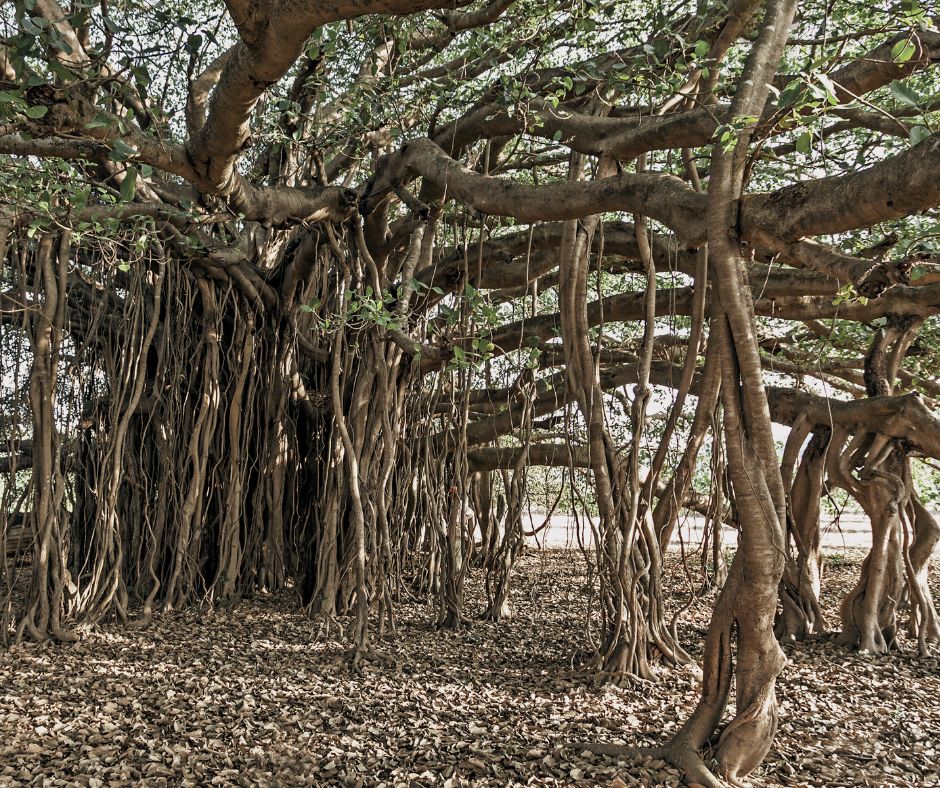

Hiking to the Oldest and Largest Banyan Trees in the World
Summary
Banyan trees, known for their vast canopies and significant cultural and ecological roles, are ancient giants rooted deeply in the traditions of the regions they populate. Not only do they support diverse forms of life and stabilize the environment, but they also hold spiritual significance in various cultures. Visiting these majestic trees offers a unique opportunity to connect with nature and culture, provided that visitors respect their sanctity and ecological importance.
Reflection Questions
- How do the ecological roles of banyan trees reflect the interconnectedness of ecosystems?
- In what ways do cultural perceptions of banyan trees influence conservation efforts and local practices?
- What personal responsibilities should individuals assume when visiting natural sites of significant cultural and ecological importance?
Journal Prompt
Reflect on a time when you visited a place that held significant ecological or cultural importance. Describe your initial impressions and how the experience affected your understanding of the site’s value. Consider how your behavior and attitudes during the visit were shaped by the knowledge of the site’s importance. What did you learn from the experience about respecting and preserving such sites for future generations?
Nestled amongst lush landscapes and shrouded in ancient wisdom lie the oldest and largest banyan trees on Earth. These colossal wonders of nature are not simply a sight to behold. They embody a profound cultural, ecological, and even religious significance. If planning a hike to marvel at the banyans of India, Taiwan, or even Hawaii, take care to respect their importance to local communities. Admire their sprawling branches and tangled roots in awe, but remember that these giants are living testaments to centuries of history and hold deep meaning for those who revere them. Read on to learn all about the banyan tree and its meaning to cultures across the globe.
What is a Banyan Tree?


A banyan tree, scientifically known as Ficus benghalensis, is a type of fig tree native to the Indian subcontinent. It is distinguished by its remarkable ability to spread and grow to vast sizes through its aerial roots. These roots grow from the branches down into the soil, forming additional trunks over time, and allowing the tree to cover a large area. Banyan trees are often among the largest trees in the world in terms of the area they cover.
Ecological Value of Banyan Trees
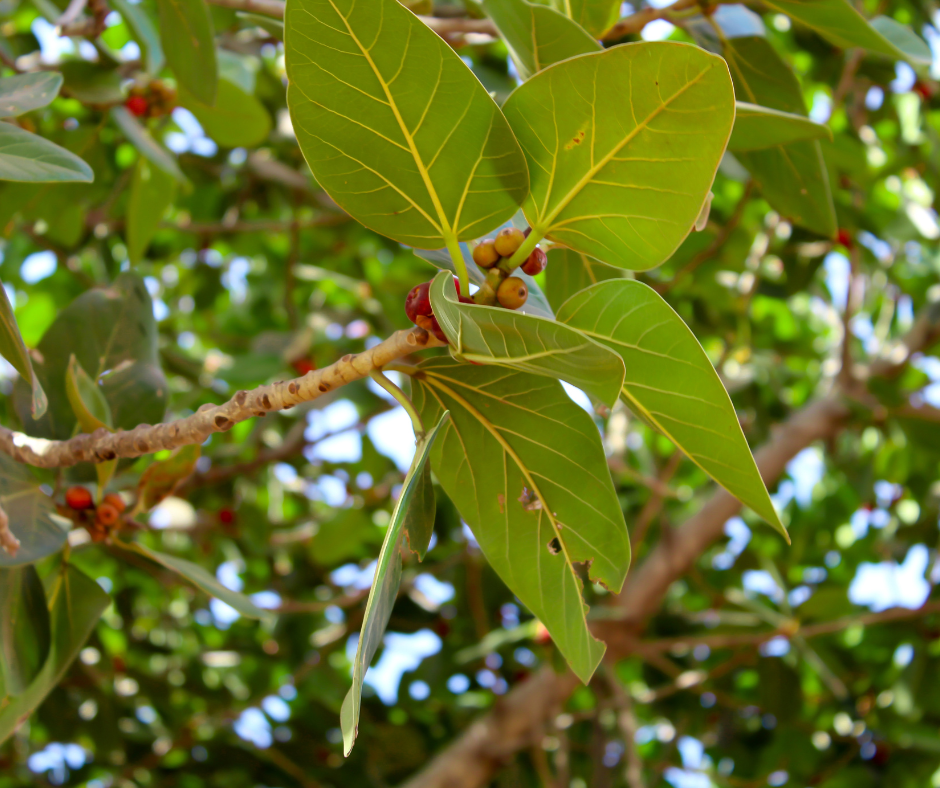

From their canopies to their root systems, banyan trees provide a rich habitat for a wide variety of plants and animals. These trees create complex ecosystems within their branches and aerial roots, supporting high levels of biodiversity. Of course, the ecological role of banyan trees extends beyond just providing physical space — they also play a crucial part in the nutrient cycling and overall health of their ecosystems. By supporting such biodiversity, banyan trees contribute to the stability and resilience of their environments.
Biodiversity Hub
Banyan trees are critical for biodiversity. They provide habitat and food for many animals including birds, bats, insects like fig wasps, and other fauna. The tree’s structure, with its numerous branches and roots, creates a variety of microhabitats within its own framework, accommodating different species at various levels from the canopy to the forest floor. Just one tree can provide for a large ecosystem.
Soil Stabilization
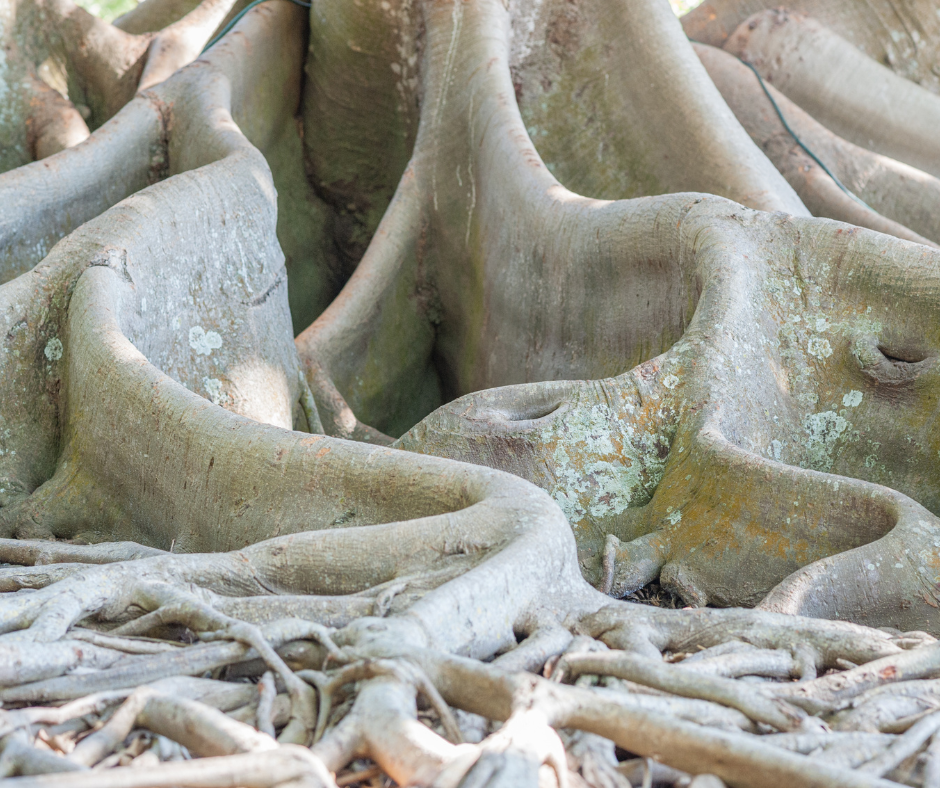

The extensive root system of banyan trees helps stabilize the soil, reducing erosion, especially in tropical areas where heavy rains are common. This is particularly important in forested and rural areas, where soil retention is crucial for maintaining fertile land.
Carbon Sequestration
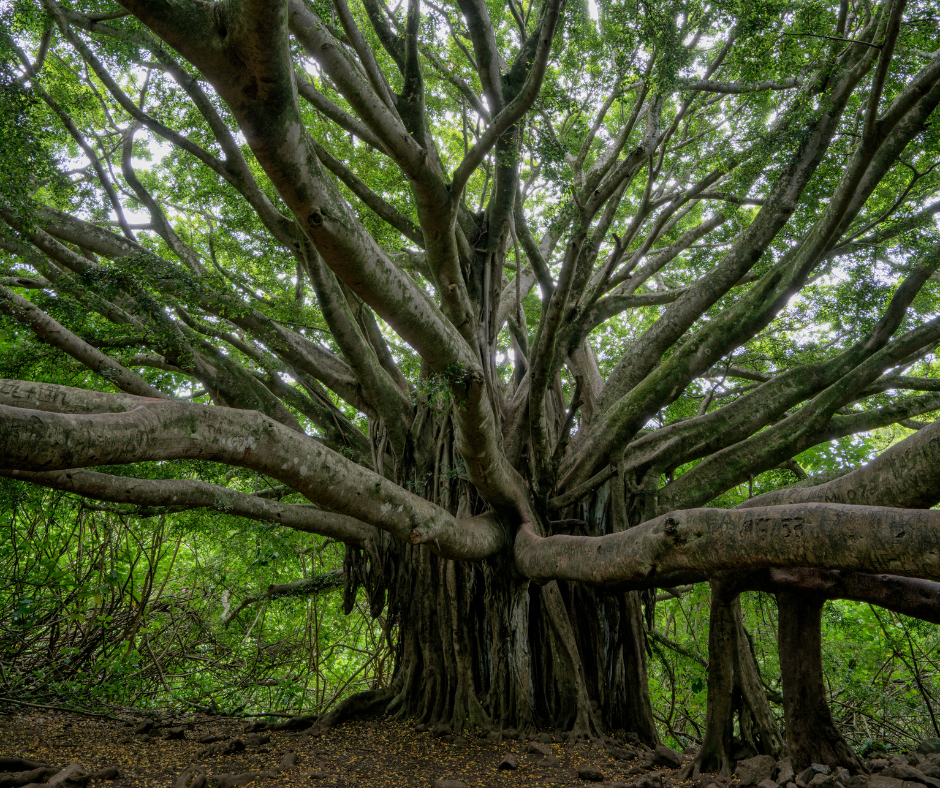

Like all trees, banyan trees absorb carbon dioxide, a greenhouse gas, and store carbon in their wood, which helps mitigate climate change. Their large size and longevity mean they can store significant amounts of carbon over their lifespans.
Microclimate Regulation
The dense canopy of a banyan tree provides shade, which helps reduce ground temperature and maintains humidity under its branches. This can be particularly beneficial in urban areas, where it helps to moderate the local climate, making environments more pleasant and reducing the need for air conditioning.
Support for Other Plant Life


Banyan trees support a variety of other plant life, particularly epiphytes like orchids, ferns, and mosses. These plants grow on the banyan’s structure without harming it, benefiting from the tree’s support to access better light and air circulation, which would be more challenging on the forest floor.
Cultural and Religious Importance of Banyan Trees
Banyan trees are deeply embedded in various cultural and religious traditions across South Asia, particularly in Hinduism and Buddhism. In fact, the banyan tree is the national tree of India. The fig species holds a significant place in Indian culture and tradition, symbolizing longevity, shelter, and protection.
The choice of the banyan tree as a national symbol reflects its importance in Indian mythology and its ubiquitous presence in various cultural practices and folklore across the country. Its vast and spreading canopy is seen as a symbol of unity and growth, mirroring the country’s aspirations and the shelter it aims to provide to its diverse population.
In Hinduism
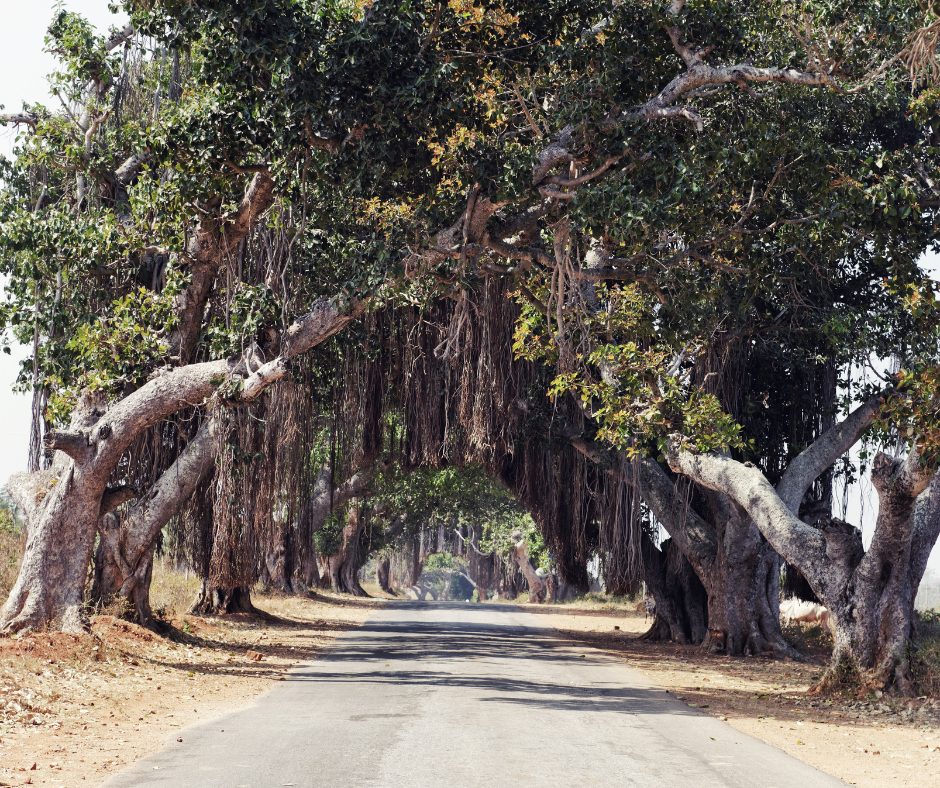

In Hindu stories, the banyan tree is considered sacred and is called ‘Kalpavriksha’, meaning ‘wish-fulfilling tree’. It is believed to represent eternal life because of its seemingly ever-expanding nature. Under its leaves, it is said that Lord Krishna rested and its vast, sheltering form is thought to symbolize protection and nurture.
In Buddhism
In Buddhism, the banyan tree also holds significant importance. It is said that the founder of Buddhism, Siddhartha Gautama, achieved enlightenment while meditating under a type of fig tree, specifically the Bodhi tree, which is closely related to the banyan. Therefore, many Buddhist monasteries have banyan trees planted within their grounds as a symbol of enlightenment and spiritual growth.
In Communities Across Asia
The presence of banyan trees in village centers across India and other parts of Asia is common, where they often serve as focal points for community gatherings and local councils. The immense size and longevity of the banyan tree make it a natural ‘council tree’, under whose shade people can assemble for discussions and social activities, reinforcing its role in community life and its cultural significance as a symbol of communal unity and continuity.
Beyond Asia: Banyan Trees in the Americas
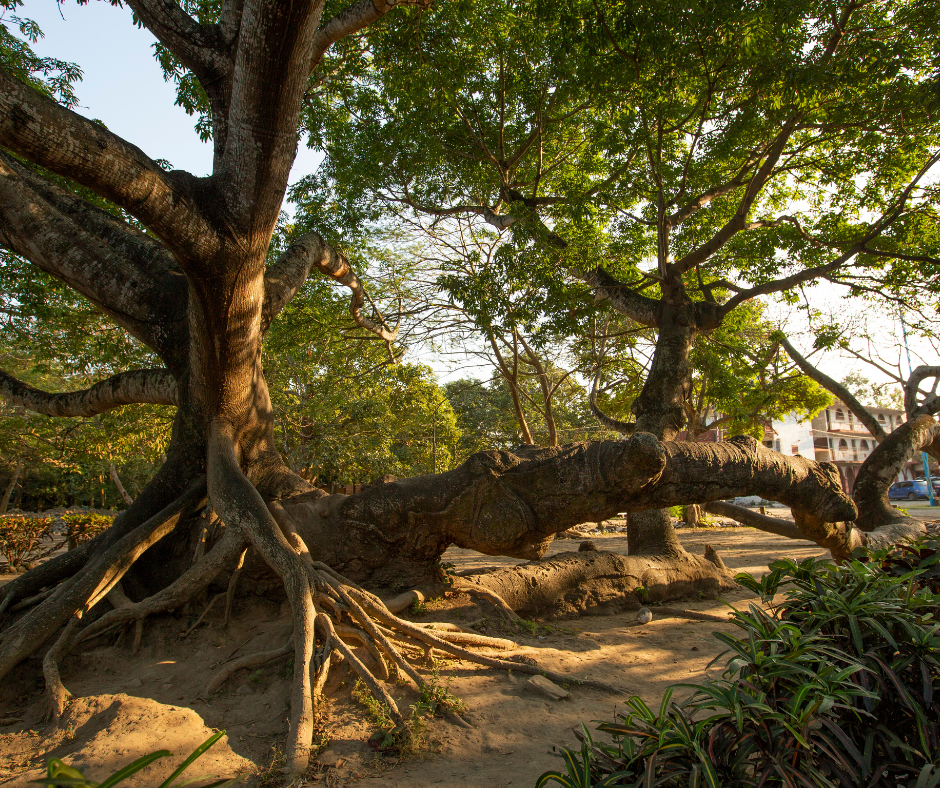

While banyan trees themselves, specifically Ficus benghalensis, are native to the Indian subcontinent and not naturally found in the Americas, the ancient Mayan culture did have a deep connection with a related species known as the “Ceiba” tree (Ceiba pentandra), which is sometimes also referred to as a type of “strangler figs” similar to the banyan tree and has a fascinating history. Many species similar to the banyan hold important cultural and religious meanings across the globe.
Fuel your creative fire & be a part of a supportive community that values how you love to live.
subscribe to our newsletter
*please check your Spam folder for the latest DesignDash Magazine issue immediately after subscription


The Ceiba tree held immense spiritual significance for the Maya and was considered sacred. According to Mayan mythology, it connected the heavens, the earth, and the underworld, serving as the world tree or axis mundi. The Ceiba tree was believed to be the route of communication between the gods and humans, with its roots extending into the underworld, its trunk in the earthly realm, and its branches reaching into the heavens.
The importance of the Ceiba is evident in various aspects of Mayan art and architecture, where it is often depicted in pottery, sculptures, and frescoes. Today, it continues to be a revered symbol in the regions once inhabited by the Maya, embodying spiritual and cultural connections that are still honored and celebrated.
Hawaiian Banyans from the 19th Century


In Hawaii, a banyan host tree, specifically the Indian banyan (Ficus benghalensis), was introduced from India in the 19th century and has since become a prominent and iconic part of the Hawaiian landscape, particularly in urban and resort areas. These trees are not native to Hawaii, but they have adapted well to the tropical climate and are often planted as ornamental trees.
One of the most famous banyan trees in Hawaii is located in Lahaina, Maui. Planted in 1873, it has grown to cover a large area and serves as a central gathering place in the town, demonstrating the tree’s role in providing shade and community space.
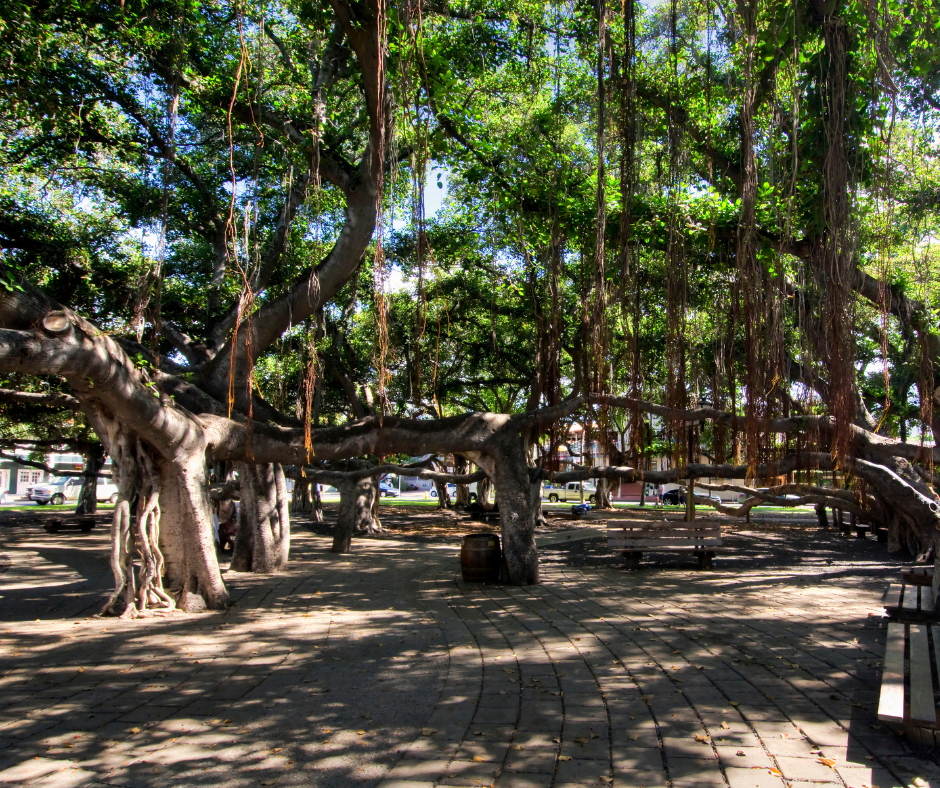

While the banyan tree doesn’t hold the same deep cultural or spiritual significance in Hawaii as other trees (particularly native species like the koa or ʻōhiʻa lehua), it is valued for its aesthetic and ecological benefits. These trees are often seen in parks, by roadsides, and in other public spaces where they provide extensive shade and contribute to the lush, green environment that is characteristic of the Hawaiian Islands.
These Are the Oldest and Largest Banyan Trees in the World
Great Banyan Tree at the Indian Botanical Garden, Howrah, India
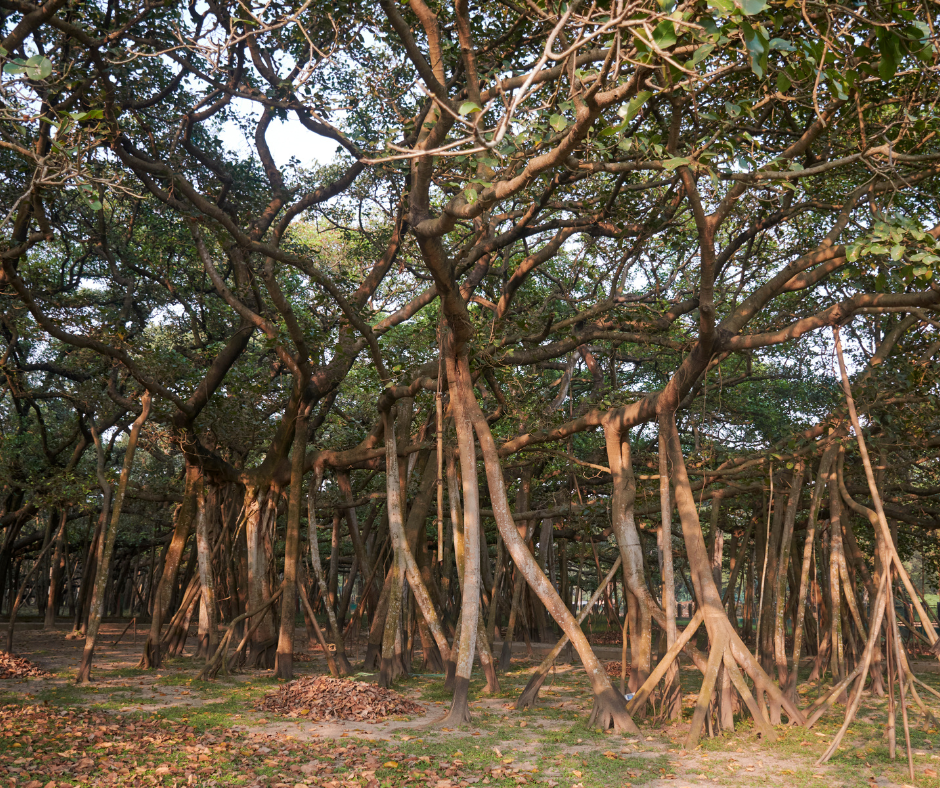

The Great Banyan Tree, located in the Acharya Jagadish Chandra Bose Indian Botanic Garden in Howrah, near Kolkata, is over 250 years old and is renowned for its astonishing size. Covering about 14,500 square meters (approximately 156,000 square feet), it looks more like a forest than a single tree due to its numerous aerial roots, which have grown down into the soil and formed additional trunks. Over the years, the original trunk has decayed, leaving the vast network of roots and trunks to support what is often considered the widest tree in the world in terms of canopy coverage.
Thimmamma Marrimanu, Andhra Pradesh, India
Thimmamma Marrimanu is believed to be over 550 years old and holds a record in the Guinness Book of World Records for the largest tree canopy in the world. It covers an area of 19,107 square meters (about 205,670 square feet) with a canopy circumference exceeding 550 meters.
The tree is named after Thimmamma, who is said to have committed sati (a now-outlawed Hindu funeral practice) on her husband’s death in 1434, and the banyan tree is believed to have sprouted from the spot. This tree is a significant cultural landmark and is visited by many, especially on the anniversary of Thimmamma’s death.
Dodda Alada Mara, Karnataka, India
Dodda Alada Mara, also known as the Big Banyan Tree, is located in the village of Kethohalli near Bangalore, India, and is over 400 years old. It covers an area of around 3 acres with a crown circumference of more than 250 meters.
Despite losing its main trunk to natural disease in the 2000s and never developing new trunks, the tree continues to thrive and spread, supported by its sprawling network of aerial roots. This tree is a popular tourist attraction and serves as a remarkable example of the resilience and longevity of banyan trees.
The Pillalamarri Tree, Telangana, India
The Pillalamarri Tree is an ancient banyan tree in Mahabubnagar, Telangana, estimated to be about 700 years old. This tree is sprawling and extensive, attracting visitors for its shade and the complex network of its branches and roots.
The site around the Pillalamarri has been developed into a tourist attraction, complete with a small museum and other facilities to educate visitors about the tree’s history and biological significance. The tree’s longevity and vast canopy make it a symbol of endurance and continuity in the region.
Tips for Hiking to the Banyans Respectfully and Responsibly
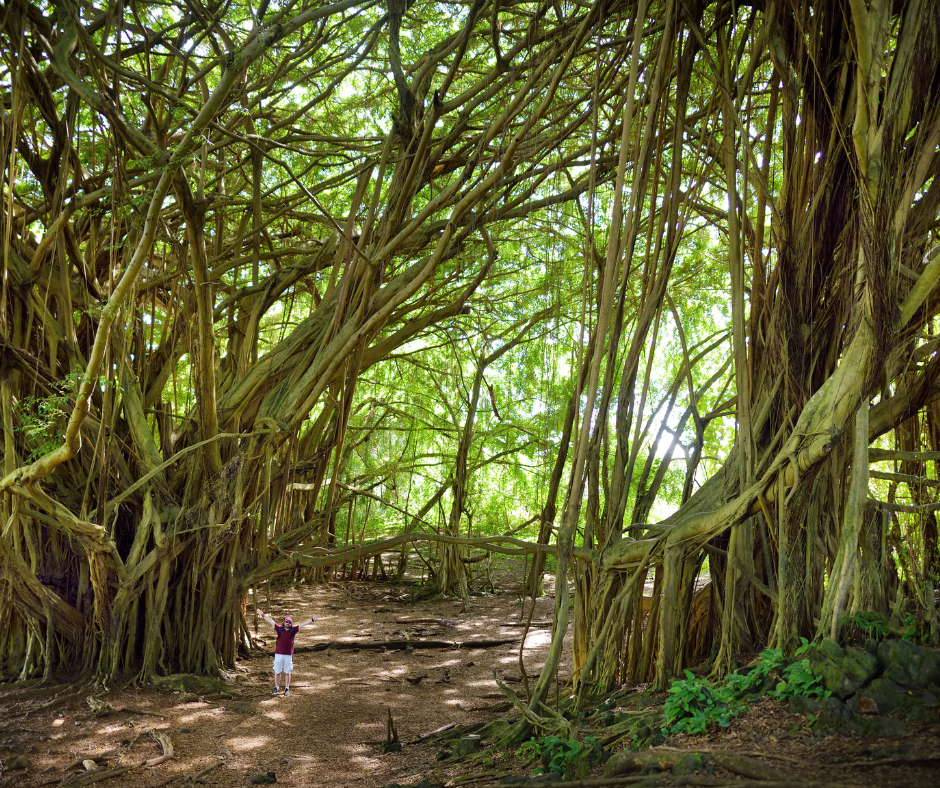

Visiting banyan trees, especially those with significant cultural and ecological importance, can be a unique and enriching experience. But it’s important to respect the cultural, religious, and historical value of these trees in addition to their ecological significance. Below are a few tips for hiking to banyan trees and enjoying panoramic views while ensuring you are respectful and responsible during your visit.
Learn About the Site
Before you go, research the significance of the specific banyan tree or trees you plan to visit. Understanding their historical, cultural, and ecological importance can enhance your appreciation and encourage respectful behavior.
Stay on Designated Paths
To protect the tree and its surroundings, always stay on marked trails or paths. This helps prevent soil erosion around the tree and protects the network of roots from damage. Resist the urge to climb the tree or hang from its aerial roots. These actions can cause physical harm to the tree, and in some cultures, such behavior might be considered disrespectful.
Leave No Trace
Follow the principles of Leave No Trace. This means packing out everything you bring in, including trash, and avoiding the use of harmful substances like insect repellent or sunscreen near the tree, as they can damage the plant life.
Respect Cultural Norms
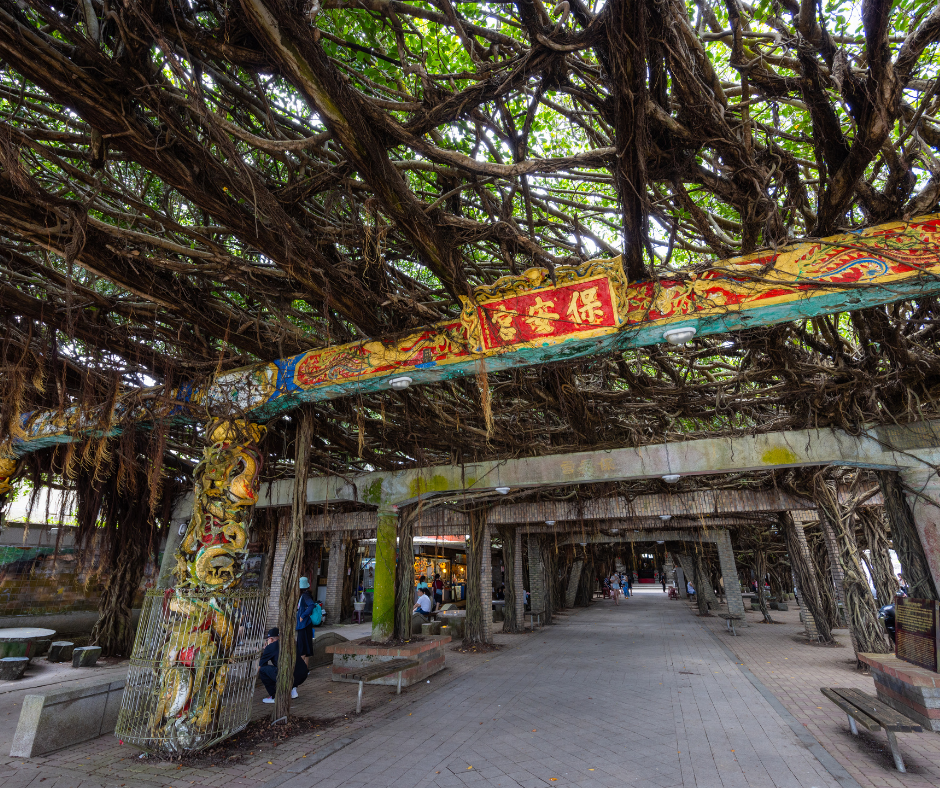

In many places, banyan trees are considered sacred. Show respect by observing local customs—this may include dressing modestly, avoiding loud noises, or participating in rituals if invited to do so.
Do Not Carve or Mark the Tree and Take Photos with Care
Never carve your initials, write on, or otherwise mark the tree. These actions can damage the bark and expose the tree to diseases or pests. Take photos responsibly. Use natural light to avoid disturbing wildlife with flash, and do not manipulate the natural setting for the sake of a picture.
Support Conservation Efforts
If there’s an opportunity to support local conservation efforts, consider contributing. This could be through donations, volunteering, or participating in educational programs.
Design Dash
Join us in designing a life you love.
-
From the Eames Lounge Chair to the Womb Chair: 15 Iconic Chairs We’ll Never Forget
We love these iconic chairs! From the Eames Lounge Chair to the Bubble Chair, explore their history, craftsmanship, and lasting impact.
-
Importance of Redundancy When Building a Team for Your Firm
If someone in your firm quits, does all their work fall on you? Let’s talk about the importance of redundancy when building a team for your design firm.
-
Key Financial Terms Every Design Firm Owner Should Know
Mastering financial terms is essential for interior design business owners. Learn key concepts like profit margins, cash flow, and more!
-
Should You Ever Demote an Employee of Your Design Firm?
Whether for cause or at the request of the employee herself, demoting an employee can be complex. Here’s all you need to know.
-
We Need to Know: How Do You Feel About the Draped Slipcover Trend?
The draped slipcover trend is back, but is it a slouchy design statement or just messy? Explore how designers are using this polarizing look.
-
2025 DesignDash Valentine’s Day Self-Gift Guide: Because You Deserve It
LIKE 2 LEAVE COMMENT 0 5 min read SummaryReflection QuestionsJournal Prompt Celebrate Valentine’s Day with a gift selected by the person who knows you best! Self-gifting is an act of self-care and we’re here for it! Whether that gift is a piece of art that speaks to your soul, a ritual that slows time, or…








